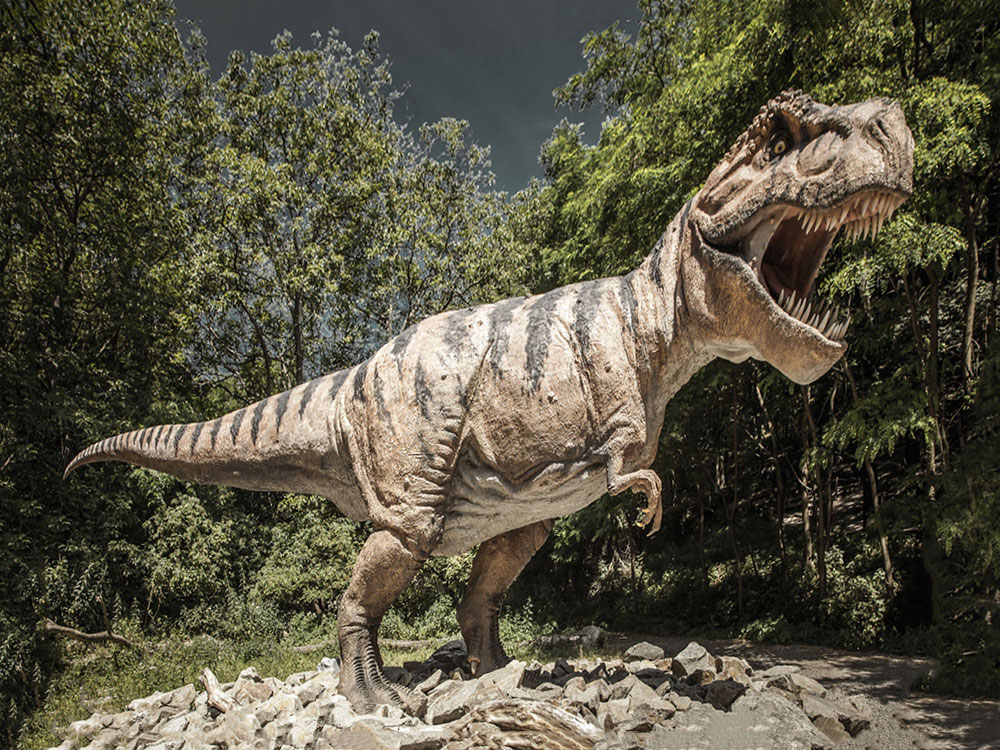HISTORIA NATURALIS
HISTORIA NATURALIS
HISTORIA NATURALIS
HISTORIA NATURALIS
HISTORIA NATURALIS
Eric Anglès, Editor
This “Natural History” series, Historia Naturalis, showcases a selection of Flora and Fauna throughout the world and examines our global view of the environment by incorporating anthropology, archaeology, biology, botany, ecology, geology, palaeontology and zoology…
This “Natural History” series, Historia Naturalis, showcases a selection of Flora and Fauna throughout the world and examines our global view of the environment by incorporating anthropology, archaeology, biology, botany, ecology, geology, palaeontology and zoology…
This “Natural History” series, Historia Naturalis, showcases a selection of Flora and Fauna throughout the world and examines our global view of the environment by incorporating anthropology, archaeology, biology, botany, ecology, geology, palaeontology and zoology…
This “Natural History” series, Historia Naturalis, showcases a selection of Flora and Fauna throughout the world and examines our global view of the environment by incorporating anthropology, archaeology, biology, botany, ecology, geology, palaeontology and zoology…
This “Natural History” series, Historia Naturalis, showcases a selection of Flora and Fauna throughout the world and examines our global view of the environment by incorporating anthropology, archaeology, biology, botany, ecology, geology, palaeontology and zoology…
4,540 Million Years Ago to the Present
4,540 Million Years Ago to the Present
4,540 Million Years Ago to the Present
4,540 Million Years Ago to the Present
4,540 Million Years Ago to the Present
Hadean Time began 4.54 billion years ago when our Earth began assembling the chemical building blocks that would, throughout a period of one billion years, create Cyanobacteria. This Archaean Eon, from 3.8 to 2.5 billion years ago, lay witness to the blue-green algae that colonised to form limestone structures known as Stromatolites and through a process called photosynthesis, released oxygen into the atmosphere.
The earliest sedimentary rocks found, are from the Isua Greenstone Belt in Greenland. They exhibit an enrichment of C12 to C13 carbon isotope ratios, caused, most likely by photosynthesis or the metabolism of other carbon compounds and by referencing this, with meteorites from the early formation of our Solar System, a date of 3.8 billion years ago can be deduced.
The Proterozoic Eon marked the beginning of all primitive life 2.5 billion years ago and the oldest fossil evidence for single-celled life with a nucleus, eukaryotes, is set at 1.75 billion years ago, whilst the multi-celled organisms, metazoans, were found 250 million years later.
The Ediacara fossil site in Australia is home to many soft-body impressions of Flatworms, Soft Corals, Sponges, Jellyfish, Anemones, Annelid Worms, Crustaceans, Echinoderms and the possible ancestor of Trilobites, all dated at 670 million years ago.
The Palaeozoic Era, 542 to 251 MYA, began with the “Cambrian Explosion”, which, for a period of 54 million years, most of the major groups of animals, Brachiopods, Corals, Sea Snails, and many different Arthropods, including trilobites, first appeared in the fossil record. At 530 MYA, the oldest fossilised vertebrate of a fish without jaws, the Myllokunmingia were discovered, whilst, 15 million years later, a marine arthropod, Anomalocaris, became the leading predator of this time.
The Ordovician Period, 488 to 443 MYA, is best evidenced by its vast diversity of additional marine invertebrates: Graptolites, Conodonts, Red and Green Algae, Primitive Fish, Cephalopods, Crinoids, Gastropods and Tetrahedral Spores similar to primitive land plants. At this time, the Earth had two supercontinents Laurentia and Gondwana, separated by a narrow Lapitus Ocean.
With milder weather and a moist atmosphere the supercontinent Gondwana finally settled at the South Pole, forming glaciers that resulted in lower sea levels causing mass extinctions in which 60% of all marine invertebrates became extinct.
The Silurian Period, 443 to 416 MYA, marked the first appearance of Coral Reefs and the extensive evolution of fish. At 428 MYA, there is fossil evidence for the oldest vascular land plants, the Cooksonia and the oldest land animal, Pneumodesmus, a millipede. 9 million years later, land based Scorpions and their relative Sea Scorpion, Eurypterids were common, with the largest being Pterygotus which grew to 3 metres in length.
The Devonian Period, 416 to 359 MYA, began with the diverse growth of vegetation consisting of small plants no taller than a metre, to ferns, horsetails and seed plants to Eospermatopteris, the first trees and forests. During this period, the rapid diversification in fish from the jawless armoured fish, Benthic to the first jawed fish, Placoderms. The Sarcopterygians, the lobe-finned fish is the ancestor of the first tetrapods.
Rhyniognatha is the oldest fossil insect. Powichthys, Youngolepis and Diabolepis are a proto-lungfish. At 409 MYA the oldest fossil shark, Doliodus had spines that stuck out of their back in front of their pectoral fin. 400 MYA Horn Coral fossils became common and at 380 MYA, the oldest fossil spider, Attercopus Fimbriungus. Five million years later, the oldest fossil amphibian and land vertebrate, Acanthostega.
Armoured fish called Arthodires ruled the seas and the largest, Dunkleosteus, grew to 8 metres in length with bony armour and at their mouths, hook-like protrusions acted as teeth.
At 360 MYA another mass extinction resulted from continental glaciation in the southern hemisphere and caused a vast global extinction of 70% of all life on Earth.
In the Carboniferous Period, 359 to 299 MYA, Corals and Crinoid fossils were abundant and at 330 MYA, Conifers and seed-bearing plants with cones, made their debut along with lungfish and amphibians. At 318 MYA, the fossil evidence included Ferns, reed-like Calamites, and swamp trees called Lycopods.
At 315 MYA, Hylonomus, a small lizard-like reptile was found trapped in the trunk of a swamp tree, giant dragonfly-like insects were common and the Arthropleura, a 3.8 metre long, millipede-like giant was the largest land-arthropod of all time. Fossilised wings on giant mayflies and dragonfly-like arthropods, make these the oldest definite evidence of flight in nature.
During the Permian Period, 299 – 251 MYA, many of the earth’s continents began to collide. Global climates became dryer and mammal-like reptiles, the Dimetrodon and Edaphosaurus, became the largest dominant land animals. At 270 MYA, Glossopteris Trees became the dominant vegetation throughout the southern continents and at 260 MYA, a wide array of large land reptiles, included the Dicynodonts and the Moschops, a 5 metre long mammal-like synapsid reptile. A long history of continental collisions resulted in the formation of the supercontinent, Pangea, which spanned from the North to South Poles before forming, over a period of 70 million years, the modern continents we recognise today.
The End-Permian, also called the End-Palaeozoic Extinction is the greatest mass extinction of all time. With giant lava flows originating from what is now Siberia, more than 90% percent of all life became extinct.
The Mesozoic Era, known as the age of the reptiles, 251 to 65.5 MYA, is separated into three distinct geological periods, the Triassic, Jurassic and the Cretaceous.
The Triassic Period, 251 to 199 MYA, began with fossils of the dicynodont, Lystrosaurus, a shovel lizard found on many interconnected continents 251 MYA. Within 6 million years, the reptiles diversify and the ruling reptiles, Archosaurs, took to the air, land and sea and one branch, Thecodonts, were the ancestors of dinosaurs.
228 MYA, the oldest dinosaur fossil, Eoraptor was a carnivore the size of a cat and within 3 million years, fossils of early dinosaurs: Fabrosaurus, Lesothosaurus, and Saltoposuchus were discovered. In the seas, dolphin-like marine reptiles called ichthyosaurs were common. Shonisaurus, was the largest and measured in at 17 Metres in length. 221 MYA saw the appearance of the oldest mammal fossils, resembling shrews. The largest predatory animal of the day, the archosaur Postosuchus. Dinosaurs continued to diversify with Coelophysis and Plateosaurus, the ancestors of the long-necked (sauropod) dinosaurs, called prosauropods. At 210 MYA, Proganochelys is the oldest turtle fossil.
At 199 MYA, the End-Triassic mass extinction is evidenced by dramatic climate changes and large outpourings of lava from the break-up of Pangea. More than 50% of life, including all Thecodonts and Synapsids, went extinct.
The Jurassic Period, 199 to 145.5 MYA, began with dinosaurs becoming the dominant land animals. Dilophosaurus is a good example of an early Jurassic dinosaur with twin bony crests on the top of its head, and was 6 metres long. At 155 MYA, Ichthyosaurs, a fish lizard resembling a dolphin, ranged in size from 70 cm through to 23 metres. The oldest bird, Archaeopteryx had many dinosaur characteristics, including a long tail, and reptile-like jaws with teeth.
Within 5 million years, large, long-necked (sauropod) dinosaurs, Apatosaurus, Brachiosaurus and Diplodocus dominated the landscape with Seismosaurus, longest of the long-necked (sauropod) dinosaurs, and possibly the largest land animal of all time, with an estimated length of 34 metres.
Allosaurus and Centrosaurus are good examples of carnivorous theropod dinosaurs and at 8 metres in length, Allosaurus was the largest meat eater of the Jurassic. Sharing the same floodplains, Stegosaurus had sharp spikes on its tail and large bony plates on its back. Liopleurodon is a Pliosaur, a marine reptile, 5 metres in length and lived in the Jurassic seas of Europe.
The Cretaceous Period, 145.5 to 65.5 MYA, The oldest flowering plants Angiosperms, seed plants that dominate the world today, deciduous trees and grasses. The oldest, Archaefructus was a submerged wetland plant, found in China and by 120 to 130 MYA, Lily Pads, Nypa Palms, and Magnolias had developed. 110 MYA, the Sauroposeidon, a long-neck Sauropod Brachiosaur was possibly the tallest animal of all time, at an estimated height of 18 metres, whilst the Argentinosaurus, a long-neck (sauropod) titanosaur was the longest animal of all time, at an estimated 40 to 43 metres in length. 100 MYA, the Carnotaurus, a horned, carnivorous theropod dinosaur from South America is immortalised by the fossilised skin impression of its face.
95 MYA, the Spinosaurus, a carnivorous dinosaur estimated to have been 14 to 16 metres long with a 2 metre sail on its back. 82 MYA, duck-billed dinosaurs, Hadrosaurs were common and Corythosaurus, Edmontosaurus, Lambeosaurus, Parasaurolophus and Maiasaurus are examples in which fossil nests, eggs, and baby dinosaurs have been found. Protoceratops was an early shield-headed (ceratopsian) dinosaur.
80 MYA, the Raptors (Dromaeosaurs) had large, hook claws on their feet. The Velociraptor was 1 metre high at the hip and 2 metres in length and the most famous Velociraptor is a skeleton preserved in combat with a Protoceratops from Mongolia in China.
75 MYA, Ceratopsian, the “shield-headed” dinosaurs, Monoclonius, Styracosaurus and Triceratops, the largest, reaching 10 metres in length.
70 MYA, two of the largest, longest, tallest, and heaviest land-dwelling carnivorous dinosaurs of all time lived at the end of the Cretaceous. In North America, Tyrannosaurus Rex was king and in South America, Giganotosaurus ruled and both were 14 to16 metres long.
The armoured Ankylosaurs with a shield back and/or club tails, become the most heavily armoured land-animals of all time. These plant-eating tanks were as much as 8 metres in length, but built low to the ground for optimal protection. Many had spikes that stuck out from their bone-covered bask and even had bony plates on its eyelids.
Giant marine reptiles ruled the inland seas throughout the Mesozoic but toward the end of the Cretaceous they were home to the largest turtle of all time, Archelon, which was 4 metres long. Mosasaurs, a type of sea serpent, hunted the turtles and grew to 23 metres in length.
65.5 MYA, the Pterosaurs, the flying reptiles of the Mesozoic, reached their largest size with Quetzalcoatlus, which had a wing span of 12 metres and was the largest flying animal of all time.
65.5 MYA huge amounts of lava erupted from the Deccan Traps in India and two meteor impacts, combined to cause the Cretaceous-Tertiary Extinction (K-T). A huge crater, 180 km in diameter buried beneath sediments of the Yucatán Peninsula near Chicxulub, Mexico and the second, smaller crater of 24 km, followed 2,000 to 5,000 years later at Boltysh in Ukraine. In addition, tektites and the rare-earth element iridium, have been found in deposits associated with the extinction. No large animals survived on land, in the air, or in the sea and this extinction event killed over 75% of all species on the earth.
The Cenozoic Era, known as the age of Mammals, 65.5 MYA to the Present, is separated into three distinct geological periods, the Paleogene, Neogene and the Quaternary.
The Paleogene Period, 65.5 to 23 MYA, began with a rapid increase in new species of mammals after the extinction of the dinosaurs. At 60 MYA, Paramyids, the oldest fossil rodents, Creodonts, cat-like predators and Oxyaena arrived, then 3 million years later, the oldest hooved mammals, the Condylarths, were the ancestors of pigs, deer, and cattle. The Coryphodon, a Pantodont and similar to a hippopotamus, was the largest mammal at the time with a height of 1 metre and length of 2.5 metres.
55 MYA marks the first fossil record of the primate, Teilhardina, from Europe, North America, and Asia. The oldest fossil horse, Hyracotherium, is 60 cm on average. The oldest fossil elephant, Palaomastodon, weighed in at 2 tonnes and were between 1 and 2 metres tall.
The Messel Pit Quarry fossils site from Germany was a lake in which many early Tertiary mammals died, including primitive horses and the oldest fossil bats. Many reptiles, amphibians, and fish also perished in the lake. A large otter-like animal from the Messel shales, called Ambulocetus, may be the ancestor of whales. The largest meat-eating land animals were flightless birds, like Diatryma from America and Gastornis from Europe. At 40 MYA, fossils were found of the weasel-like Miacis, the ancestor of dogs and bears. Within 3 million years, the oldest fossilised dog, the weasel-like Hesperocyon made its debut.
30 MYA Indricotherium, a hornless rhinoceros was the largest land mammal of all time and stood 5.5 metres high at the shoulder. From the Badlands of South Dakota, some of the mammals included Brontotheres, Rhinos, Horses, Oreodonts and Camels, 5 million years later saw the appearance of the oldest fossil cat, Proailurus.
The Neogene Period, 23 to 2.6 MYA, was a time of continental upheaval, snow and ice fell on the mountains retaining water and lowering the sea levels. Within 3 million years, grasslands become widespread in the warmer, dryer climate and ground cover became dominated by small ferns and other plants, rather than grasses. A further five million years and the largest shark of all time, the Carcharodon Megalodon were 12 metres in length. 5 MYA was a time of global cooling, which led to ice built up at the poles and initiating the Ice Ages.
4.3 MYA, the Australopithecus, the oldest hominid (human-like ancestor) fossils from Africa and at 3.2 MYA in Ethiopia, members of the biological family Hominidae lived, represented today by the nickname “Lucy”, she walked upright and was 1.1 meters tall.
The Quaternary Period, 2.6 MYA to the present, glaciers advance from the poles, then retreat. Sea levels rise and fall with each period of freezing and thawing.
Homo-Habilis, a hominid from Africa that made crude spear points at 2.5 MYA and Homo-Erectus, 700 thousand years later, is the oldest evidence of hominids outside of Africa.
1 MYA, Woolly Mammoths, Woolly Rhinos, Mastodons, Ground Sloths, and Ice Age Buffalo roamed the plains in front of the advancing ice.
500 thousand years later, Neanderthal-Man, Homo-Neanderthalis lived in Europe during the Ice Age and went extinct approximately 35,000 years ago when the last continental glaciers retreated.
200 thousand years ago, Homo-Sapiens have come into being in Africa and will remain very rare for much more than 100,000 years and have a greater part of their brain devoted to language and speech and are superior to Homo-Erectus. 110 thousand years ago, Humans and the Neanderthal survive the Eemian Interglacial Period of 15,000 years and endures the beginning of another ice age.
75 thousand years ago, people in Africa have begun to expand and the genetic evidence suggests that they will replace all except for the Khoisan and the Pygmy peoples.
Within 2 thousand years, the Toba Catastrophe Theory holds that on the island of Sumatra, a super-volcanic eruption created a volcanic winter that extended to Africa and reduced the world’s human population there to between 1,000 and 10,000 breeding couples. At 60 thousand years ago, the planet warms, ice retreats and changes in climate begins to alternate between warmer and colder conditions.
50 thousand years ago, the Ice Age Mammoth, Mastodon, Ground Sloth, and Bison fossils at Kentucky are prevalent. Mating between Neanderthals and people called Denisovans introduces genes that will help modern humans cope with viruses and the interbreeding will embody as much as 4 percent of the human genome.
42 thousand years ago, Humans have crossed a body of water from Sundaland in Southeast Asia to the continent of Sahul, including what today are called New Guinea, Australia and Tasmania.
Within 2 thousand years, the Neanderthals become extinct.
Within 10 thousand years, the Homo-Erectus become extinct.
12 thousand years ago, melting ice begins a rise in sea levels and have separated New Guinea, Australia and Tasmania.
8 900 years ago, Comet debris smash into North America, reversing the ice age thaw. Saber-Toothed Tiger, Dire Wolf, and the Woolly mammoth became extinct.
7 500 years ago, throughout the world, climates become warmer, wetter and more stable with an estimated five million people, most of them hunter-gatherers and 500 years later, settled farming begins.
Today, it is a miracle that we have avoided five major extinction events as the last one, the K-T Extinction 65.5 million years ago wiped out 75 percent of all species on Earth…
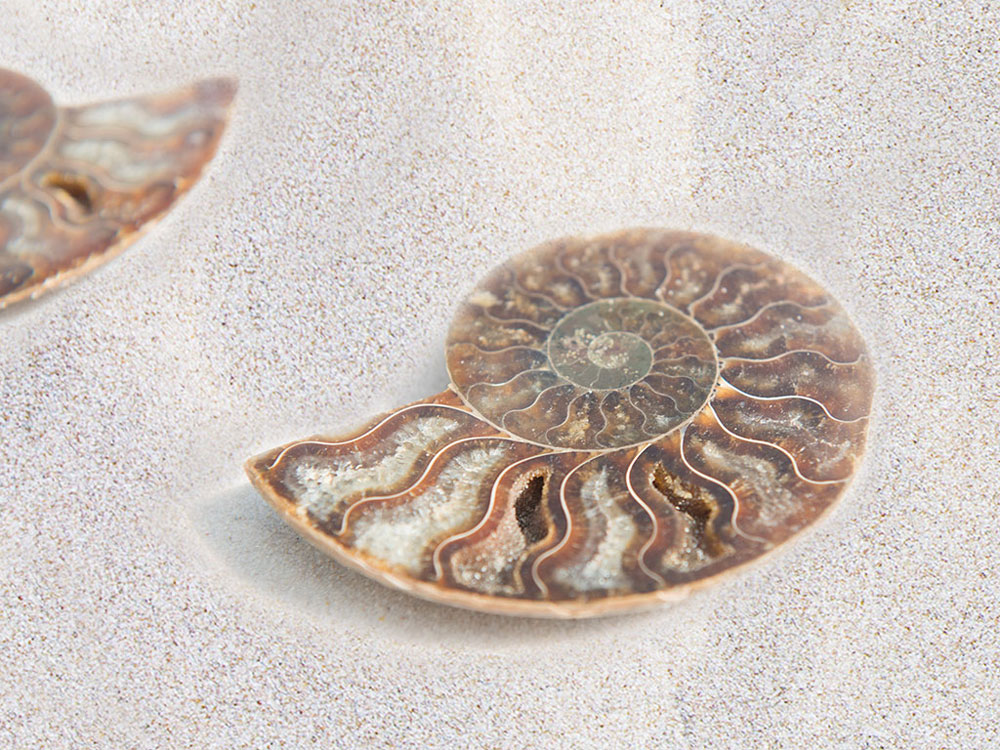
Ammonite | 415 to 65.5 MYA
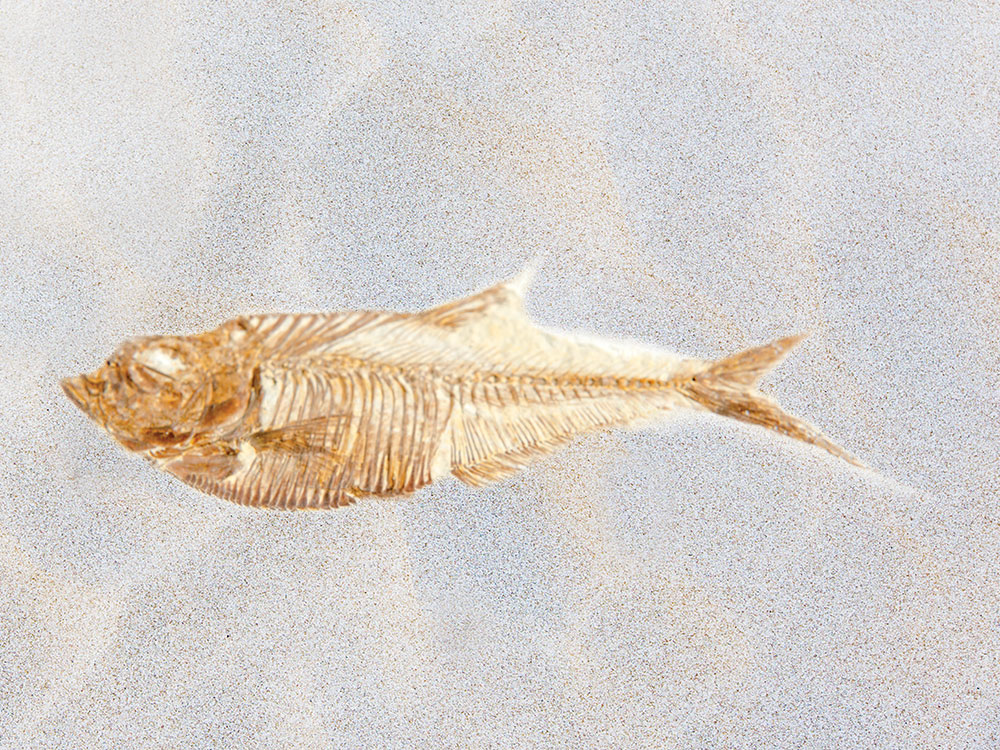
Diplomystus Dentatus | 540 MYA
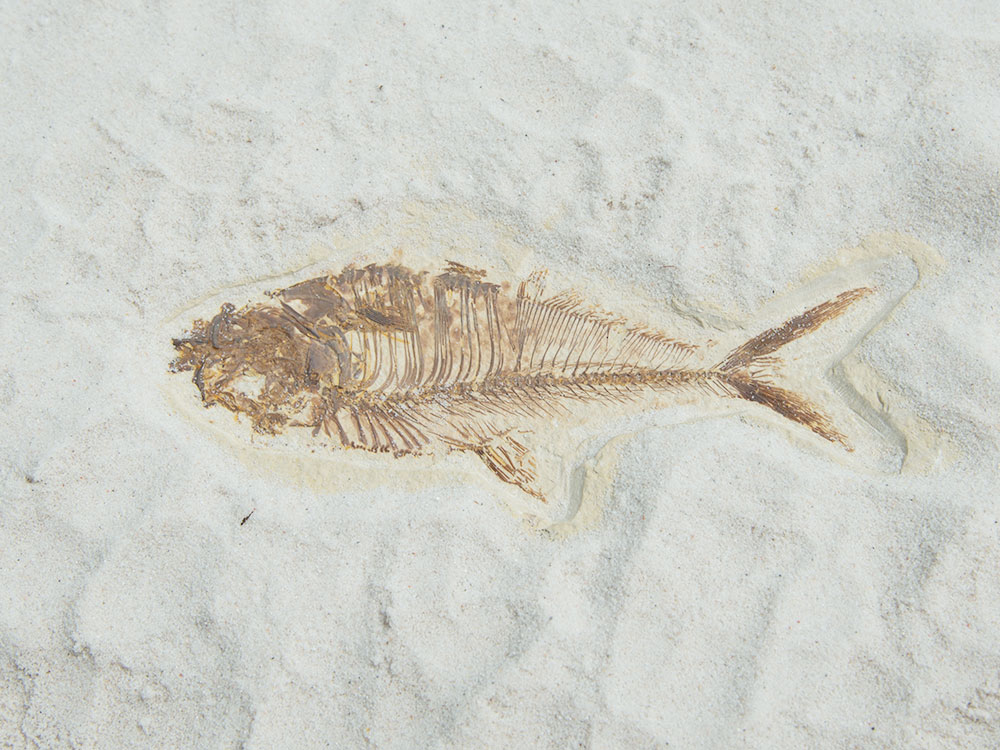
Knightia Alta | 55 MYA
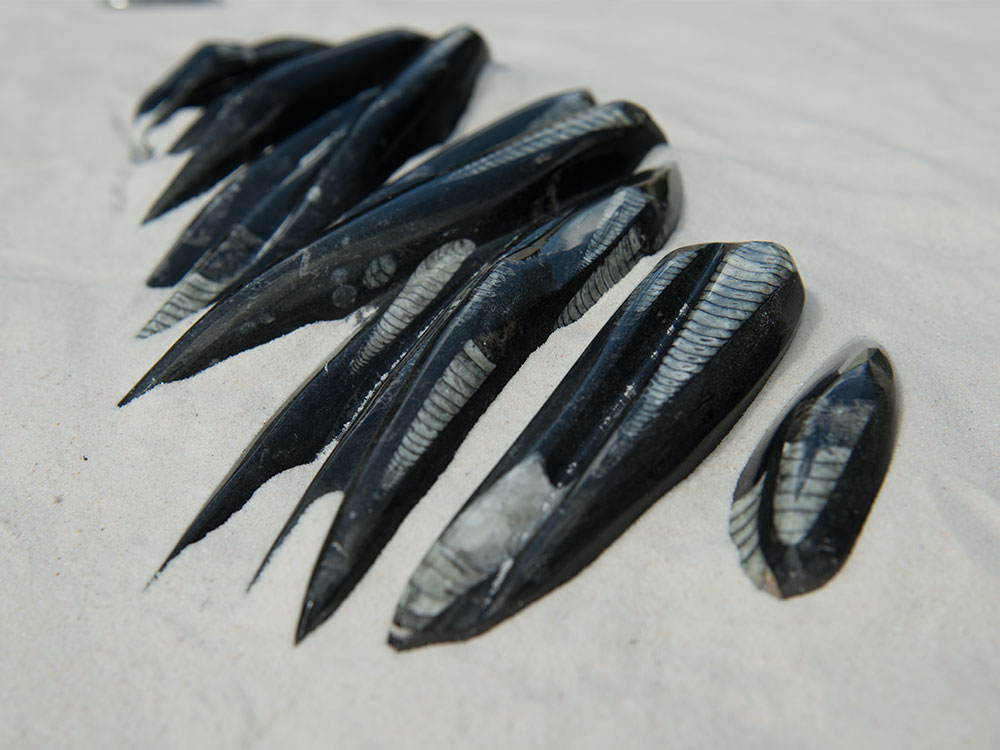
Orthoceras | 490 to 443 MYA
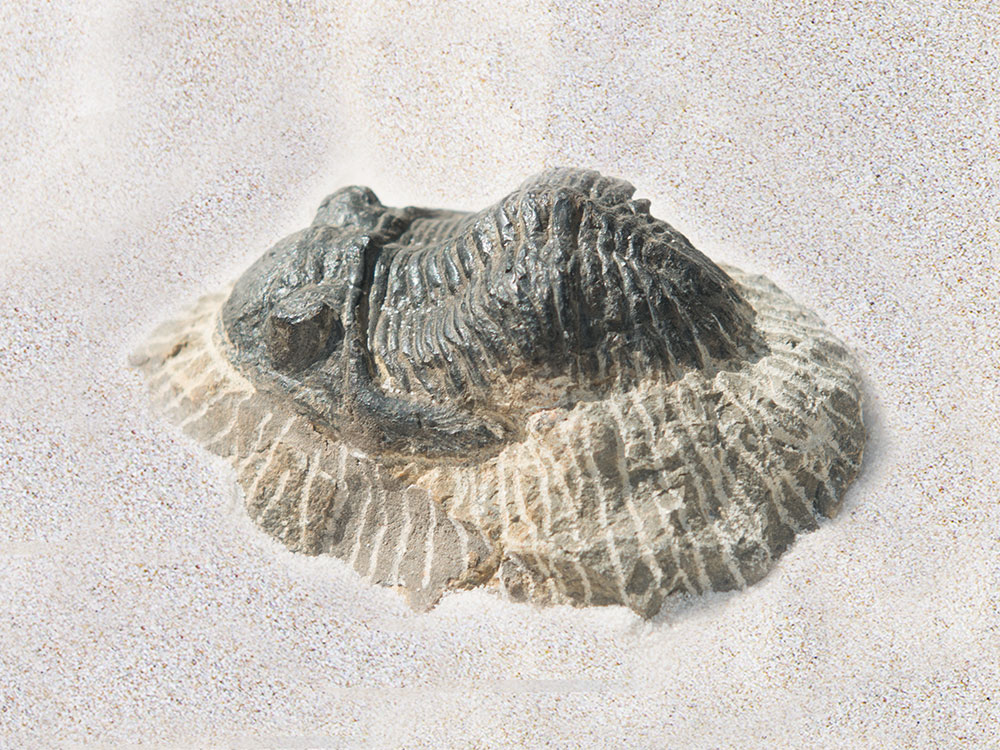
Trilobite | 521 to 250 MYA
